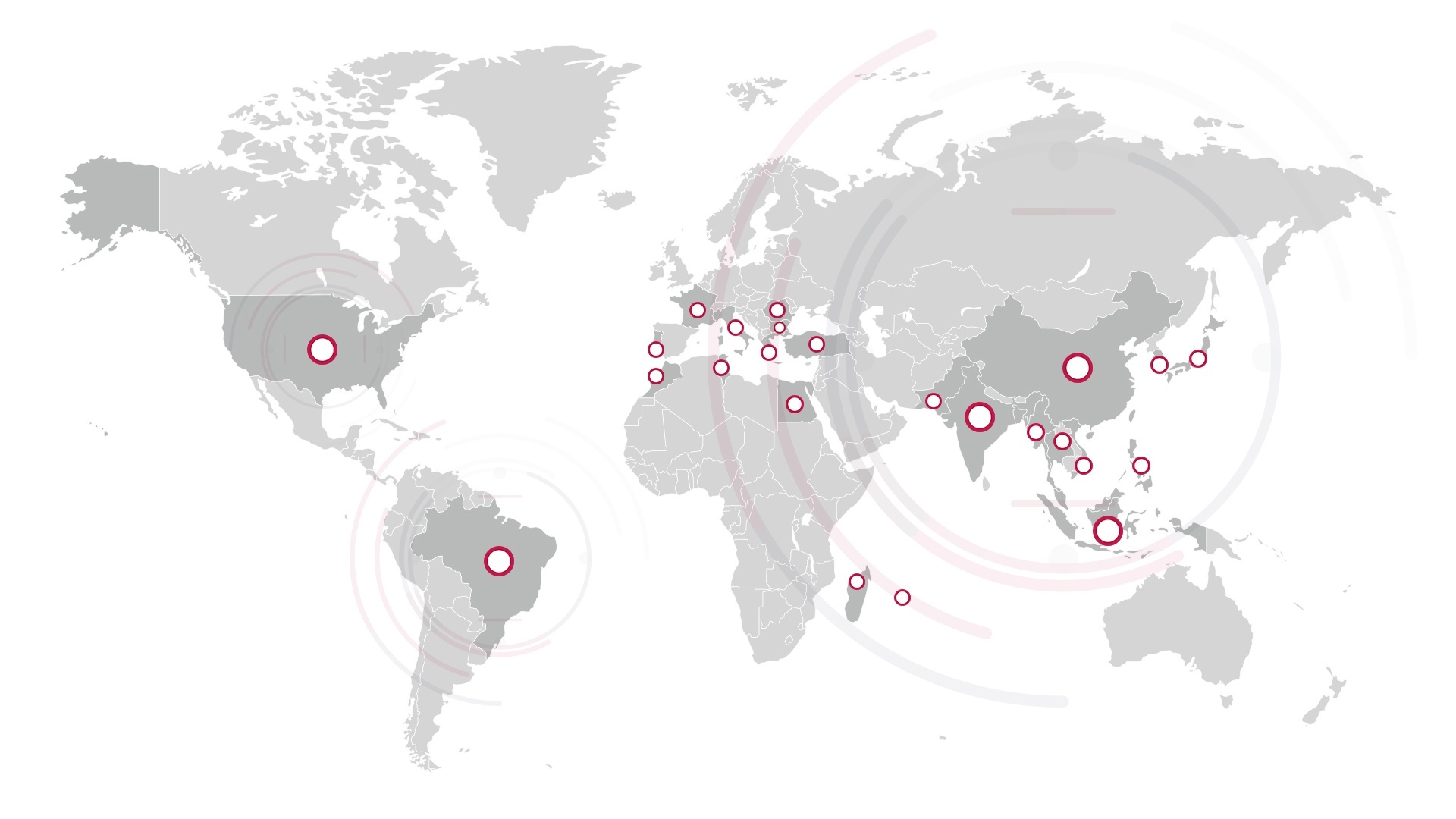SgT is celebrating 30 years of textile quality expertise and is more than ever engaged for the future.
Indeed, impressive technology developments are transforming every aspect of the multi-billion-dollar fashion chain, bringing faster and more efficient production, on-demand access for consumers, improved sustainability, and personalization at every stage. From virtual stores to spider-silk threads to sewing robots, here are some ways technology is changing the future of fashion.
Virtual and Augmented Reality – Merging the physical and online worlds
Fashion brands are betting big on both virtual reality (VR), a totally immersive computer-generated experience, and augmented reality (AR), which blends virtual elements with real surroundings. Amazon’s Outfit-VITON, Ditto, and Virtooal are among those offering AR-powered ‘try-on’ systems that invite consumers to virtually try on clothing and accessories through entertaining, shareable experiences in which they play stylist.
The Obsess platform develops virtual stores for fashion brands, replacing the outdated ecommerce grid with a more immersive encounter. Brands like Zara, Topshop, and Uniqlo are integrating AR elements into their stores to engage more customers, and labels like Victoria’s Secret and Tommy Hilfiger are streaming runway shows in VR. Clothing itself is also going digital, with Louis Vuitton releasing a virtual collection for League of Legends characters, Polo Ralph Lauren’s digital wardrobe for Bitmojis, and Gucci creating virtual looks for several apps and avatars – all touted as “zero waste” clothing.
Artificial Intelligence – AI becomes the fashion designer
Retaining customers through prediction and personalization is the driving force behind artificial intelligence (AI) in the fashion world. Many brands are already using AI to analyze data to predict customer preferences and forecast trends. AI can also learn a person’s style and choose – and even design – items to match. The British fashion label Finery and Google’s Project Muze use AI to deliver automated wardrobe designing tools.
There are also broader benefits for brands, who can combine this individual data to forecast overall trends. Digital stylists and chatbots are also interacting with consumers to make recommendations and optimize the purchasing process without involving human resources. There is also enormous potential for AI to revolutionize supply chain management through real-time inventory tracking, rapid feedback and analysis for quick adaptation, and continuous risk evaluation.
Sustainability Through Tech – Shaping more sustainable fashion
Technology is advancing sustainability in fashion, which has come under scrutiny for its wasteful and energy-intensive processes. The benefits begin at the design phase, with software like EFI Optitex and CLO using 3D simulation to make alterations in real-time, minimizing waste and error. The use of AI in inventory management, pairing shoppers only with what’s available and suited to them, is also reducing returns and unused resources.
However, one of the most significant developments is sustainable fibers, fabrics, and materials. For example, Levi’s is making jeans with 30% ‘cottonized’ hemp and jackets with detachable hardware for easy recycling. Girlfriend Collective sells leggings made from recycled polyester, and Swiss brand On is launching fully recyclable shoes in 2021. Other innovations include Allbirds’s shoes made from eucalyptus leaves, super-strong spider silk created by Bolt Threads and EntoGenetics, Frumat’s leather-like fabric from apple skins, and Algiknit’s textiles made from seaweed.
The Internet of Things – Making clothing interactive
The Internet of Things (IoT) is essentially when objects communicate with each other through the internet. While wearable technologies are nothing new, they’re becoming much more seamless. For instance, Google’s platform Jacquard Threads creates conductive threads woven into fabrics that can do things like make sleeves respond to gestures and materials that change color according to your mood or setting.
Loomia also makes soft circuits that can be embedded in fabrics for data tracking, heating, sensing, and lighting. Yoga pants crafted by Wearable X can correct your posture during poses. There are phone-charging jackets by Baubax, navigation-assisted shoes by Lechal, and garments developed by the University of Maryland that cool you down as you work out. Perhaps the feat most beneficial to humankind is health-related smart fabrics. Owlet’s smart socks can monitor babies’ heart rates and oxygen levels, while Hexoskin and Oura are among those making clothing and accessories that can track your heart rate, breathing, temperature, and more.
Robots, Automation, and 3D Printing – The future of manufacturing
The rise of automation in the fashion industry intends to bring products to consumers faster and with greater customization through on-demand manufacturing. While robots are well trained in cutting fabric, robotic arms can now run sewing machines by themselves with incredible precision. Softwear’s fully automated ‘Sewbot’ promises to move brands’ supply chains closer to their customers while creating higher quality products at a lower cost.
The footwear industry is also making great strides in both robotics and 3D printing. On-demand 3D printing has proven to reduce fabric waste by around 35% and allows for rapid alterations with prototypes produced in real-time. Nike is using Grabit robotic technology to assemble the upper parts of its sneakers, and Adidas, Reebok, and New Balance are 3D-printing personalized shoe components like laces, soles, and insoles.
Do you foresee any of these innovations becoming a reality in the next 5 years?



